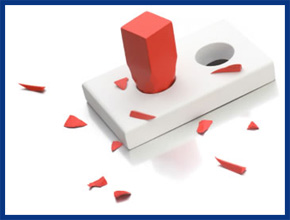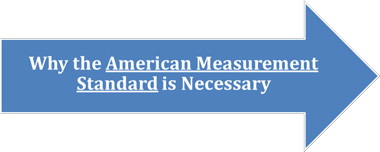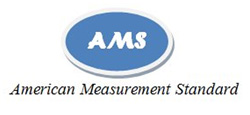Here Comes the Judge! Three Court Cases
Involving Square Footage Agents & Appraisers
A Texas Court Ruling:
Square Footage Must Be Accurate
Pleasant v. Bradford, No. 03-07-00167-CV, 2008 WL 2544814 (Tex. App. June 26, 2008).
A Texas court recently upheld the principle that “size matters” during a case in which the square footage of a sold home wasn’t what it advertised. The buyers sued and won against the real estate professionals who handled the sale, told the court that they bought the property largely because they thought they were paying a lower rate per-square-foot than other sellers in the area were asking. The house turned out to be 253 square feet smaller than the listing agent advertised and the local multiple listing service posted. The jury awarded the purchasers damages and held the real estate professionals liable for misrepresentation and fraud. The court of appeals in Austin upheld the decision even though the couple had moved into the home 30 days prior to closing/settlement. The square footage information came from public tax records, which is a common (and growing) problem within the real estate industry. The appeals court said the real estate professionals had a duty to get the information right and the “buyers shouldn’t have to pull out a tape measure.”


Oklahoma Supreme Court… In its recent opinion, the Court held that the particular facts of the case raised a question of whether the REALTORS® had misrepresented the property size “unreasonably, recklessly or dishonestly.” Bypassing the several disclaimers and releases, the Opinion implies that passing along inaccurate square footage data allows a negligence claim based on the licensee’s duties pursuant to the Real Estate License Code regardless of any contrary express contractual terms. The Court’s decision allows the buyers a trial even if they saw a disclaimer by letting them challenge whether the REALTORS® knew (or should have known), in the exercise of “reasonable skill and care,” that the courthouse information quoted in the MLS listing was inaccurate.” Bowman v Presley.
Arizona recently upheld a court decision that an appraiser may be held accountable, not only to their client, but to the consumer. In this case an error of 569 square feet. “We held that an appraiser retained by a lender in connection with a purchase-money mortgage transaction owes a duty of care to the borrower who is the prospective buyer of the home to be appraised.”
And the Judge Said:
So, where did you get that square footage total?
Show me. What “standard” did you use? Show me the company’s policy on providing square footage.
Yes, you provided it, you are responsible for its accuracy.
Did you bring your checkbook?


Public records. The real estate industry using the square footage details listed in public records is like trying to force a square peg in a round hole; it just doesn’t fit. The real estate industry must have accurate square footage details to function properly. Until the price-per-square-foot valuation mentality changes, the creation of a home’s square footage will have a huge impact on its value.
While most agents and appraisers certainly understand how they calculate square footage (for those that do personally measure homes), how would they explain and support their methods to someone who knows little or nothing about the process? What documentation could they take to court to prove that their square footage total is correct? In court, they can’t say – “I followed the appraisal standard and have been measuring homes this way for twenty years without ever having a problem.” Someone may just ask them to show them the rules they follow. Do most agents or appraisers know where to look within the ANSI guideline to show someone else how or why they created a specific measurement? The answer more often than not is NO.

Agent and appraisers – how well do you really know the measurement standard you use? As more and more attention is focused on real estate, dropping prices, and low appraisals; and, as the news of these court decisions make their way throughout the legal profession, these may be real questions agents and appraisers will need to answer in the future. Who is the final authority in measuring square footage? How prepared are the final authorities to defend their measurements and calculations? How much education is available on this one topic, which provides the very foundation of the real estate valuation system? The answer is frighteningly little…
If three agents and three appraisers were asked today to create a sketch of a one and one-half story dwelling, with sloped ceilings and a partially finished basement; and then to explain their measurements and calculations (and the exact rules or standards they followed), there would be several different square footage totals and several different explanations. The sad truth is there is a great deal of variation when it comes to the “art” of measuring residential square footage. Appraisers are the most qualified to provide this data and the MLS should be filled with information provided by appraisers, NOT info taken from the county tax department. Until our industry stops using a price-per-square-foot formula to determine home prices, then square footage info must be accurate, and provided with one nationally mandated (and well taught) standard of measurement. Until that happens, Buyers Beware!!!
Just imagine: you are standing in front of a judge, sitting across from a buyer who has filed a claim against you concerning inaccurate square footage measurements. You disclosed within the appraisal report and have just testified that you adhere to the ANSI® measurement standard. The opposing attorney points to your sketch (now on the big screen for all to see) and smugly points out that you did NOT measure the stairs according to ANSI® guidelines. The next slide reads, to claim adherence to this or any standard, it requires you to follow it 100%. You counted the stairs as square footage on the lower level, but did not include them within the upper level square footage count. He moves forward to the next slide, which clearly shows that ANSI requires the stairs to be included in the GLA of the 1st and 2nd levels. It’s not that much of a difference. But, there you are – the square footage expert. Except now, the attorney has you on the defensive and now your credibility comes into question. Every piece of information is reviewed in a new light. Home-owners are angry about being upside down in their mortgage and many are just looking for a window of opportunity. Don’t raise your window. This is NOT the time to discover the practices and procedures of the ANSI Guideline.
Appraiser “A” shows up in court with a copy of a written standard of practice, and a copy of the appraisal report where they disclosed the method utilized in their measurement and calculation of square footage. Appraiser “B” shows up with their years of experience and can explain that their measurement method has provided acceptable square footage totals for appraisal reports for the last 20 years. “It’s the way I was taught. It’s not written down anywhere, it’s just the way we do it here.” When the judge has to make a decision based on the available evidence, you decide if you want to be appraiser “A” or “B.”

Don’t think there’s any angry homeowners out there just looking for some way to fight back against their underwater mortgage? The ones who paid too much, are paying a mortgage where they owe more than it’s worth, the ones who can buy their neighbor’s house for half what they paid for theirs – there are lots of upset and angry homeowners, all looking for any crack in the system, that will let them seek relief. They’re not picky about from who. Along comes the square footage issue. Certainly not a new issue; but, with three fairly recent (and precedent setting) cases that give attorneys a new source of ammunition. The square footage discussion is just getting started. Stay tuned…


The real estate industry uses two measurement standards or philosophies, yet there has only been one formal standard. The AMS provides professionals a choice, and the ability to stand up (in court if necessary) and say “this is how I measured the house.” Liability protection at a new level, available for all real estate professionals. The commercial side of the industry has seven standards. The residential side only has two; one of which was made available in writing in 1996 and one in 2009. Until one standard can be universally mandated for all real estate professionals, the AMS helps to protect real estate pros and consumers.

